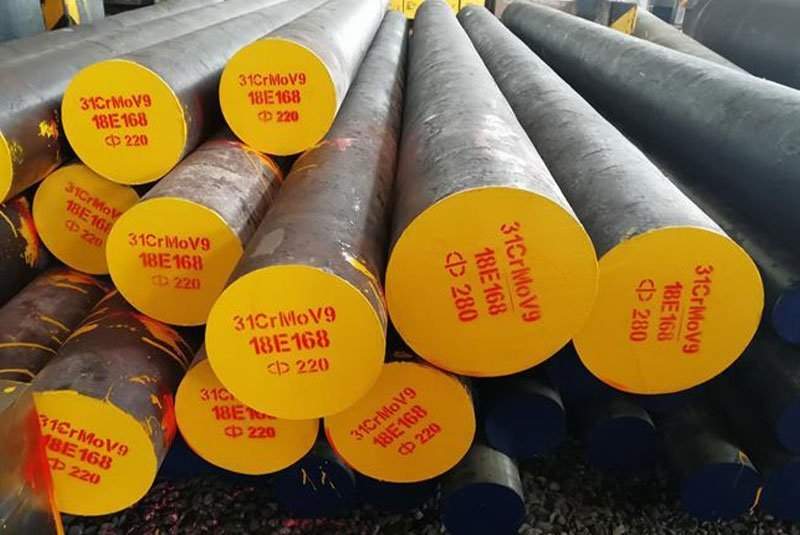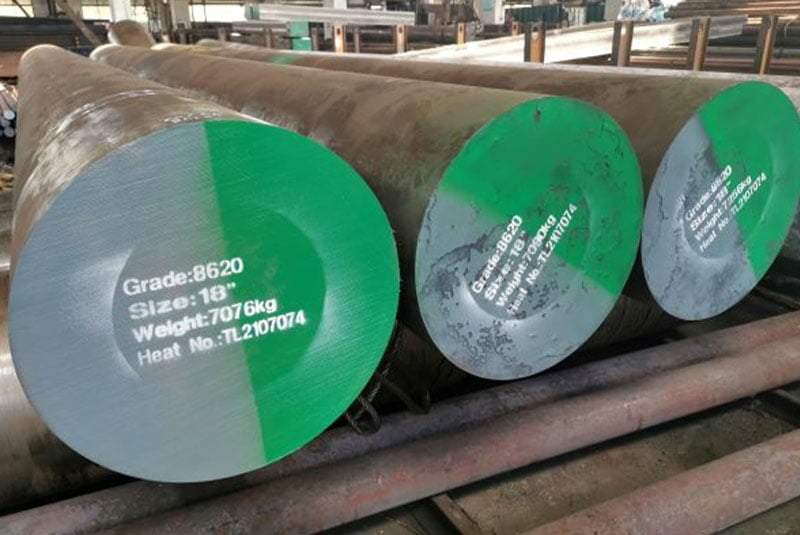Introduction
In the realm of construction, selecting the right materials is crucial for ensuring the durability, safety, and efficiency of a project. One such material that has gained prominence is low alloy steel. This blog will explore the various advantages of using low alloy steel material in construction, highlighting its properties, applications, and benefits over other materials. By understanding these factors, construction professionals can make informed decisions that enhance the quality and longevity of their projects.
What is Low Alloy Steel Material?

Definition and Composition
Low alloy steel is a type of steel that contains additional alloying elements such as chromium, molybdenum, and nickel in small quantities, typically less than 5% by weight. These alloying elements significantly enhance the mechanical properties and corrosion resistance of the steel, making it more suitable for demanding applications.
Properties of Low Alloy Steel
Low alloy steel material exhibits several key properties, including:
- High Strength: Enhanced by alloying elements, providing greater load-bearing capacity.
- Improved Toughness: Ability to withstand impacts and stresses without fracturing.
- Superior Corrosion Resistance: Increased resistance to environmental factors that cause rust and degradation.
- Enhanced Hardness: Greater resistance to wear and abrasion, extending the material’s lifespan.
Advantages of Low Alloy Steel Material in Construction
Enhanced Durability
Corrosion Resistance
One of the most significant advantages of low alloy steel material is its superior corrosion resistance. The addition of elements like chromium and nickel helps form a protective oxide layer on the steel’s surface, preventing rust and extending the material’s lifespan. This makes low alloy steel ideal for structures exposed to harsh weather conditions and corrosive environments.
Wear and Tear
Low alloy steel is known for its hardness and resistance to wear and tear. This property is particularly beneficial in construction applications where materials are subjected to heavy loads and abrasive conditions. The enhanced durability reduces the need for frequent maintenance and replacements, leading to cost savings over time.
High Strength-to-Weight Ratio
Structural Efficiency
The high strength-to-weight ratio of low alloy steel material allows for the construction of lighter yet stronger structures. This efficiency is crucial in projects such as high-rise buildings and bridges, where reducing the weight of the structure without compromising its strength is essential. The use of low alloy steel can result in significant material savings and reduced construction costs.
Load-Bearing Capacity
Low alloy steel’s superior strength enables it to support heavier loads compared to conventional carbon steel. This property is advantageous in applications such as beams, columns, and framework, where high load-bearing capacity is required. The material’s strength also contributes to the overall stability and safety of the structure.
Versatility and Flexibility
Wide Range of Applications
Low alloy steel material is versatile and can be used in various construction applications, including structural components, pipelines, and reinforcing bars. Its adaptability to different design requirements makes it a preferred choice for architects and engineers looking to implement innovative and efficient construction solutions.
Ease of Fabrication
Despite its high strength and hardness, low alloy steel is relatively easy to fabricate. It can be welded, cut, and shaped using standard construction tools and techniques, allowing for flexibility in design and construction processes. This ease of fabrication enhances the material’s appeal for a wide range of construction projects.
Cost-Effectiveness
Long-Term Savings
While the initial cost of low alloy steel material may be higher than that of carbon steel, the long-term benefits justify the investment. The material’s enhanced durability and reduced maintenance requirements lead to significant cost savings over the lifespan of the structure. Additionally, the high strength-to-weight ratio can result in material and labor savings during construction.
Sustainability
Environmental Impact
Using low alloy steel material in construction contributes to sustainability efforts. The material’s long lifespan and recyclability reduce the environmental impact associated with construction waste. Additionally, advancements in steel production have led to more energy-efficient and eco-friendly manufacturing processes.
Example Table: Comparison of Low Alloy Steel Material with Carbon Steel
To illustrate the advantages of low alloy steel material, here is a comparison table highlighting key properties and benefits over traditional carbon steel:
| Property/Benefit | Low Alloy Steel Material | Carbon Steel |
|---|---|---|
| Corrosion Resistance | High (due to alloying elements) | Moderate (prone to rust) |
| Strength | High | Moderate |
| Toughness | High | Moderate |
| Wear Resistance | High | Moderate |
| Fabrication Ease | Good | Excellent |
| Cost | Higher initial, lower long-term | Lower initial, higher maintenance |
| Sustainability | High (recyclable, long lifespan) | Moderate |
Applications of Low Alloy Steel Material in Construction

Structural Components
Beams and Columns
Low alloy steel material is commonly used in the construction of beams and columns due to its high strength and load-bearing capacity. These components form the backbone of many structures, providing the necessary support and stability.
Framework and Reinforcements
The material is also ideal for framework and reinforcements, offering enhanced durability and resistance to environmental factors. This application is particularly important in buildings and infrastructure projects where longevity and reliability are critical.
Bridges and Infrastructure
Bridge Construction
Low alloy steel’s high strength-to-weight ratio makes it an excellent choice for bridge construction. The material’s ability to support heavy loads while maintaining structural integrity is essential for ensuring the safety and durability of bridges.
Infrastructure Projects
Infrastructure projects such as highways, railways, and pipelines benefit from the use of low alloy steel material. Its corrosion resistance and toughness ensure that these structures can withstand the rigors of daily use and exposure to harsh conditions.
Industrial Facilities
Chemical Plants and Refineries
In industrial facilities such as chemical plants and refineries, low alloy steel material is used for pipelines, storage tanks, and structural components. The material’s resistance to corrosion and high temperatures makes it suitable for these demanding environments.
Power Plants
Low alloy steel is also utilized in power plants for constructing boilers, pressure vessels, and other critical components. The material’s ability to withstand high pressures and temperatures ensures the safe and efficient operation of power generation facilities.
Conclusion
Low alloy steel material offers numerous advantages for construction projects, including enhanced durability, high strength-to-weight ratio, versatility, cost-effectiveness, and sustainability. By understanding these benefits and incorporating low alloy steel into their designs, construction professionals can create structures that are safer, more efficient, and longer-lasting. Whether for structural components, bridges, infrastructure, or industrial facilities, low alloy steel material proves to be a superior choice in the ever-evolving construction industry.
FAQ
What is low alloy steel material?
Low alloy steel is a type of steel that contains small quantities of alloying elements such as chromium, molybdenum, and nickel. These elements enhance the material’s mechanical properties and corrosion resistance, making it suitable for demanding construction applications.
How does low alloy steel compare to carbon steel?
Low alloy steel offers superior strength, toughness, and corrosion resistance compared to carbon steel. While it may have a higher initial cost, the long-term benefits, such as reduced maintenance and longer lifespan, make it a cost-effective choice for construction.
What are the common applications of low alloy steel in construction?
Low alloy steel is used in various construction applications, including structural components (beams and columns), bridge construction, infrastructure projects (highways, railways, pipelines), and industrial facilities (chemical plants, refineries, power plants).
Why is low alloy steel considered a sustainable material?
Low alloy steel is considered sustainable due to its long lifespan, recyclability, and advancements in eco-friendly manufacturing processes. Using low alloy steel in construction helps reduce environmental impact by minimizing waste and promoting energy efficiency.
How can I ensure the quality of low alloy steel material for my construction project?
To ensure the quality of low alloy steel material, work with reputable suppliers and manufacturers who adhere to industry standards and specifications. Conduct thorough inspections and testing of the material before and during construction to verify its properties and performance.
